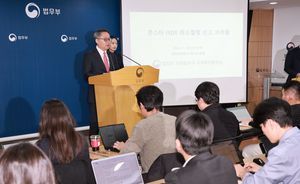A research team from University College London (UCL) Cultivated cells from the amniotic fluid between 16 to 34 weeks of pregnancy to create fetal intestines, kidneys, and lungs
It will likely be an alternative to the ethically controversial fetal stem cells… Acceleration in clarifying the cause of congenital malformations

The research team successfully created a fetus’ artificial stomach, intestine, and lungs using only cells collected from the amniotic fluid. This is the first time that the organ tissues of a fetus in the late stages of pregnancy, after 22 weeks, have been created. It is expected to help clarify the cause of congenital malformations, which has been difficult to research due to ethical issues.
According to the National Health Insurance Service, the number of newborns with congenital malformations has increased even though the birth rate in Korea last year recorded the lowest ever at 0.72. Congenital malformations refer to cases where there are structural abnormalities in the body from birth. Research to identify the cause of malformations has been continued but struggled to pinpoint due to various genetic and environmental factors. There were also limitations in using organs obtained from actual fetuses.
On the 5th, a research team led by Professor Paolo De Coppi of University College London (UCL) Pediatric Surgery announced in the international academic journal Nature Medicine that they had successfully created artificial fetal tissue using cells collected from the amniotic fluid. This can help identify the cause of congenital malformations in the later stages of pregnancy. It can also replace existing stem cell technology that has caused ethical controversy by utilizing fetal stem cells obtained from abortion.
The technology to create a human fetal model by cultivating stem cells from fetal tissue comes with ethical and legal issues. Depending on the country, abortion itself can be illegal, and there has been disagreement over whether it is ethically justifiable to use fetal stem cells obtained from abortion for research. The research on fetal development in the post-term of pregnancy was limited as fetal stem cells could only be obtained before the 22nd week.
Professor Coppi’s research team has developed a new method to create artificial fetal tissue. They obtained epithelial cells from the amniotic fluid of pregnant women between 16 and 34 weeks. The amniotic fluid is a thin membrane that surrounds the fetus, filled with fluid. The research team analyzed the base sequence of epithelial cells covering the inner surface of the amniotic fluid. By doing this, they could distinguish the epithelial cells that grow into the fetus’s stomach, intestines, kidneys, lungs, and more and cultivate each separately.
The researchers successfully cultivated cells that formed a single tissue over two weeks. They confirmed that each cell formed a fetus’s small intestine, kidney, and lung and had functional characteristics of each organ. The researchers then used this technology to create an artificial lung for a fetus with a congenital diaphragmatic hernia, which is a condition where part of the stomach rises to the chest due to abnormalities in the diaphragm area. By creating the artificial lung, they confirmed that symptoms associated with congenital diaphragmatic hernia also appeared in the lung.
They created an artificial organ (organoid) that functions similarly to fetal tissue using only cells collected from the amniotic fluid, not the fetus. Different kinds of treatments can be tested without directly touching the human body by exploiting artificial organs. Through this, there is also a possibility of developing a customized treatment method that fits the disease or physical characteristics.
The research team stated the significance of their research, saying, “We can now create the organs of a fetus without fetal stem cells obtained from abortion. This solves an ethical problem and will help research fetal development in the later stages of pregnancy that has not been achieved so far.”











Most Commented